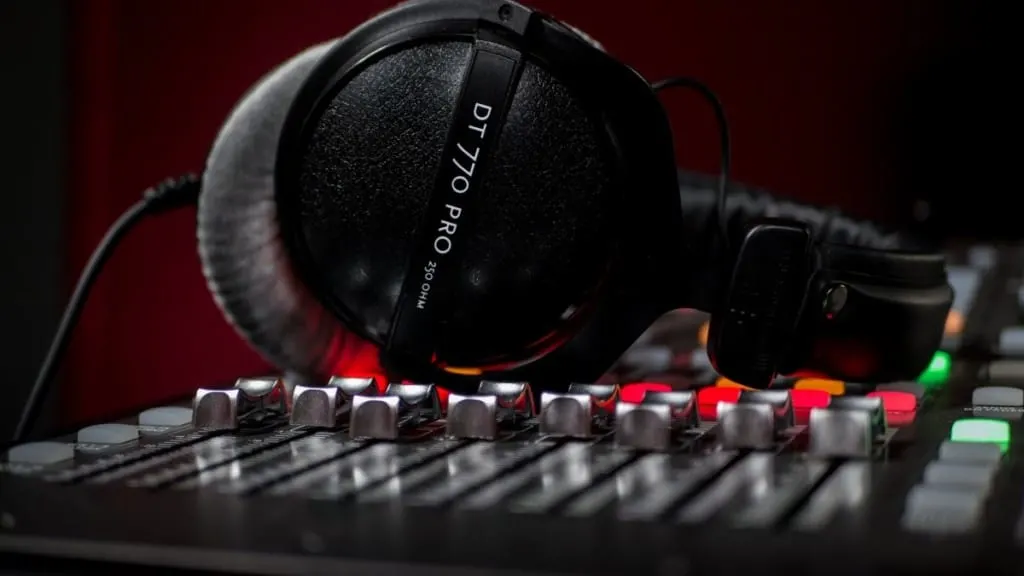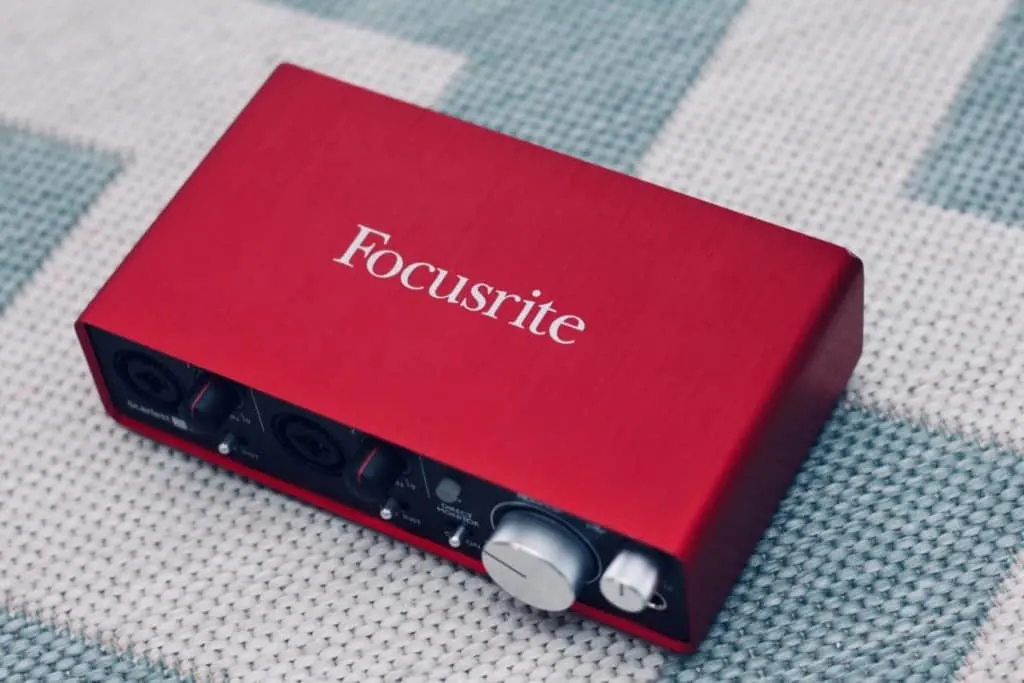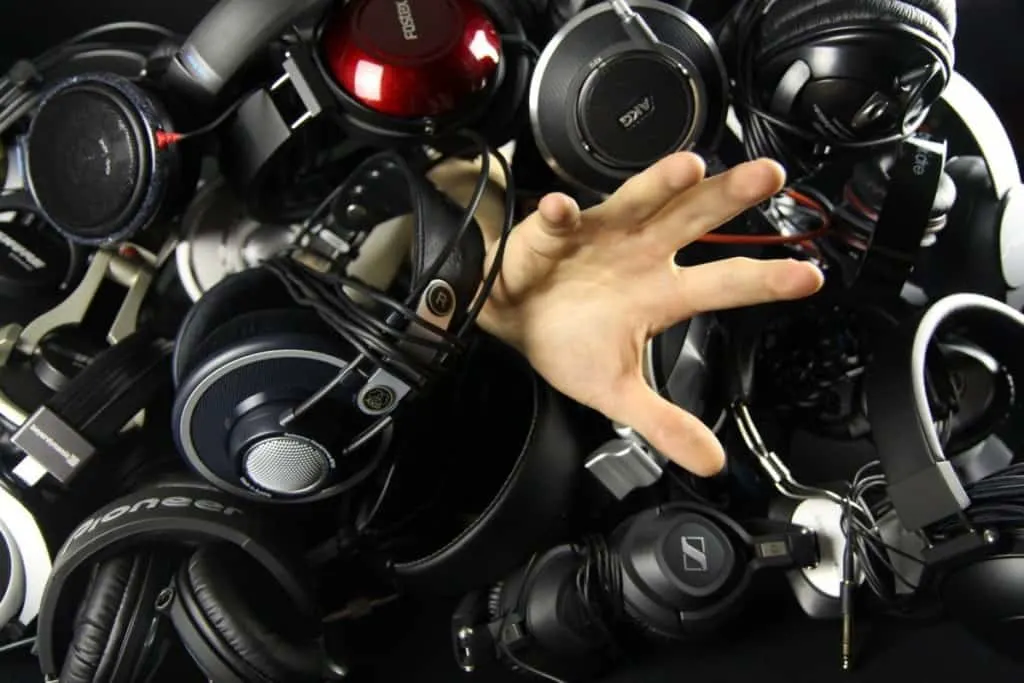Headphones are such an important part of studio life. We often overlook them but without a good pair of “cans”, as we call them, our daily life would be infinitely more boring and difficult.
Can we help our headphones sound better than they do when plugged into a phone, for example? Yes, we can make them sound loud and proud with just a couple of little gadgets. I’ve been through so many of them in my life that I thought I should put this post together to help others too.
So, what is a headphone preamp, what does it do, and do I need one for recording?
A headphone preamp is a dedicated piece of equipment used to enhance the volume and audio quality your headphones receive. This can be great if you invested good money on headphones, otherwise, it isn’t going to make enough of a difference to your recording experience.
So, the answer to this question is “as long as your headphones are worth it”.
There’s a lot to be explained before you know if your headphones are worth the investment. I’ll go through the very basics and then move on to practical advice. Are you ready? Let’s do this!

Hi-Fi Headphones And Impedance Explained
Welcome to the best sonic experience a human can have: hi-fi headphones.
Whether you are an audiophile, a music engineer, an enthusiast, a mastering legend, or a mixing master, there is no denying the pleasure of hearing all the nuances of great recordings through the right pair of headphones. That being said, do you know why or how high-end headphones can produce that kind of sound? First are the millions of dollars in design, and decades in the making and second is impedance.
High Or Low Impedance?
The impedance level of most of the headphones in the market (we’re talking about 80% of them or more) is very low. The lower the impedance, the louder the sound, and the more we drift away from the hi-fi.
On the other hand, headphones with higher impedance levels sound much quieter offering more detail. This partially explains why so much of the pop music you hear on the radio is so simplistic in hooks and arrangements; it is made to be heard on low-impedance headphones.
Let’s talk numbers.
Regular headphones work on 32 ohms usually. This includes your earbuds that came with your phone and most street-wear headphones. Moving on to professional levels such as the Beyerdynamic DT770 PRO, studio legendary headphones work at 250 Ohms. Furthermore, the company offers them in 16, 32, 80, and 250 ohms to accommodate various devices.
These are my current choice for my studio work and come highly recommended!
You can check out these headphones here on Amazon
- Remember this golden rule: the higher the impedance, the louder the source to get decent signal levels.
What happens if you connect your gleaming 250-ohm DT770 PRO to the output of your headphone on your phone? No, you won’t break the time-space vortex, you’ll just receive a very weak, barely audible signal.
This is because a high impedance level needs a powerful source. Also, you need to have a very detailed, hi-fi source to enjoy the nuances of high-impedance headphones. At 250 ohms you can very well mix a record in the studio.
Speaking of studios, let’s see the various case scenarios in which a headphone amp & preamp can help you.

On The Engineer/Producer Side Of The Studio
On one side of the glass, we have the engineer, the producer, and very likely also a lot of recording equipment. Let’s see why you need a headphone preamp and amp on that side.
· Hear better – Most of the time, audio interfaces have a dedicated headphone output. Inside you’ll find a DAC (converting computer info into sound waves) and a headphone preamp.
If you are running a Focusrite Scarlett audio interface, for example, which is a very inexpensive, great sounding device; you will probably be plugging your headphones in a socket made for low-impedance headphones. A headphone preamp and amp will help you plug those DT770 there and mix the record properly at a decent volume.
- I have written an article on how to get started with an audio interface. You can read it here.
A pro tip, in this case, to avoid amplifying the signal twice is to go to the headphones amp from the outputs of the interface, rather than its headphone jack.
· Get the full frequency spectrum – Another great plus of high-impedance headphones is that they reproduce the entire frequency spectrum (20 Hz to 20 kHz) more faithfully. You might begin to pick up low-frequency saturation, high-end harshness, and fluffy low-mids. I’m telling you, going back to your own mixes with new headphones is mostly a huge blow to your ego. You’ll simply hear things your low-impedance headphones couldn’t reproduce.
For studio use on that side of the glass, I would recommend desktop headphones preamps and amplifiers. They are simply more rugged and easy to use when seating on your desk. If you have the budget, the best in my opinion is Rupert Neve´s RNHP headphone amp and preamp.
On The Musicians Side Of The Studio
We’ve seen what happens on one side of the studio, let’s take a look at what happens on the other side, where musicians make magic, and songs come alive.
· Volume and clarity – This one goes especially to all the drummers out there and all other players with loud instruments. There are few more stressful things than trying to play perfectly, not hearing yourself or the backing tracks properly. A headphone amp and preamp can help you solve that in a heartbeat. Just dial in how much you want the signal amplified and voilà!
· Multiple musicians – Most companies manufacturing headphone amp and preamps do it for this reason: to accommodate various musicians in the same space. You can even have individual volume controls so the drummer’s and the guitarist’s volumes are different and there are no arguments over that.
· Fancy headphones – This happens a lot with singers who are used to hearing their own voice through a certain kind of headphones. If they arrive at the studio and your hardware cannot feed those hungry hi-fi cans, you’ll be in trouble. Having a headphone amp ready for him or her will put a smile upon their faces and yes, they’ll sing better too.
The way I work with the “other side” of the studio is by letting musicians pick their volumes themselves.
I just explain to them how my ART HeadAmp6 Pro which sounds huge fits in your jeans pocket.
Take a look at this youtube video that shows an overview of the ART HeadAmp6 Pro
Live Performances And Headphone Preamps
Can you benefit from using a headphone amp and preamp for live performances? Well, the answer to that question depends on several things. First of all, it is important to note that self-monitoring on the stage is always paramount for a good performance. That being said, it depends largely on the style of music you play, whether you’ll benefit from a headphone amp and preamp on stage or not.
· If you play a loud instrument – Again, all those musicians banging the drums or playing a loud trumpet, or similar can benefit from receiving audio louder and with better quality.
· If you change venues a lot – Sadly, as a musician working in the underground circuit, you never know what you’ll find when you get to the venue. If the monitoring system is a million years old and super noisy but you have your trusty headphones with a pocket-sized amplifier you might turn a potential disaster into an epic performance.
A headphone amp and preamp is the cheap, easy way out before buying dedicated in-ear monitoring systems such as the Shure PSM300 . If your budget isn’t quite there yet, you can always solve it with headphones preamp, and amp.

Are Expensive Headphones Worth It?
Headphone Preamps And Everyday Life
Finally, let’s take a look at the benefits of a headphone amp and preamp for everyday life:
· Use those fancy headphones anywhere – Commuting to work using $300 headphones is a possibility. You can play your favorite tunes from your phone and hear them through your state of the art headphones at a decent volume with a pocket-size headphones amp and preamp.
· Choose the room and enjoy – This is another thing I do very often, which is to take my small Neve headphone amp and my fancy mixing Neumann NDH20 headphones and listen to a mix I did outside the studio. This allows me to be more objective and criticize my work further to come up with a better result.
Conclusion: “It All Comes Down To The Headphones”
I hope that now that we are concluding this journey you have a better idea about headphones preamp and amps, why, how, and where to use them.
Truth be told, the most important investment is always the cans or headphones. If you don’t have high-impedance, super clear, professional headphones then that should be your first aim. Then you can choose the right amplifier to give them enough juice and work at a decent volume level.
Never forget that your ears are your most important instrument, so also beware of using your headphones too loud.
Happy (loud & proud) headphone listening!
